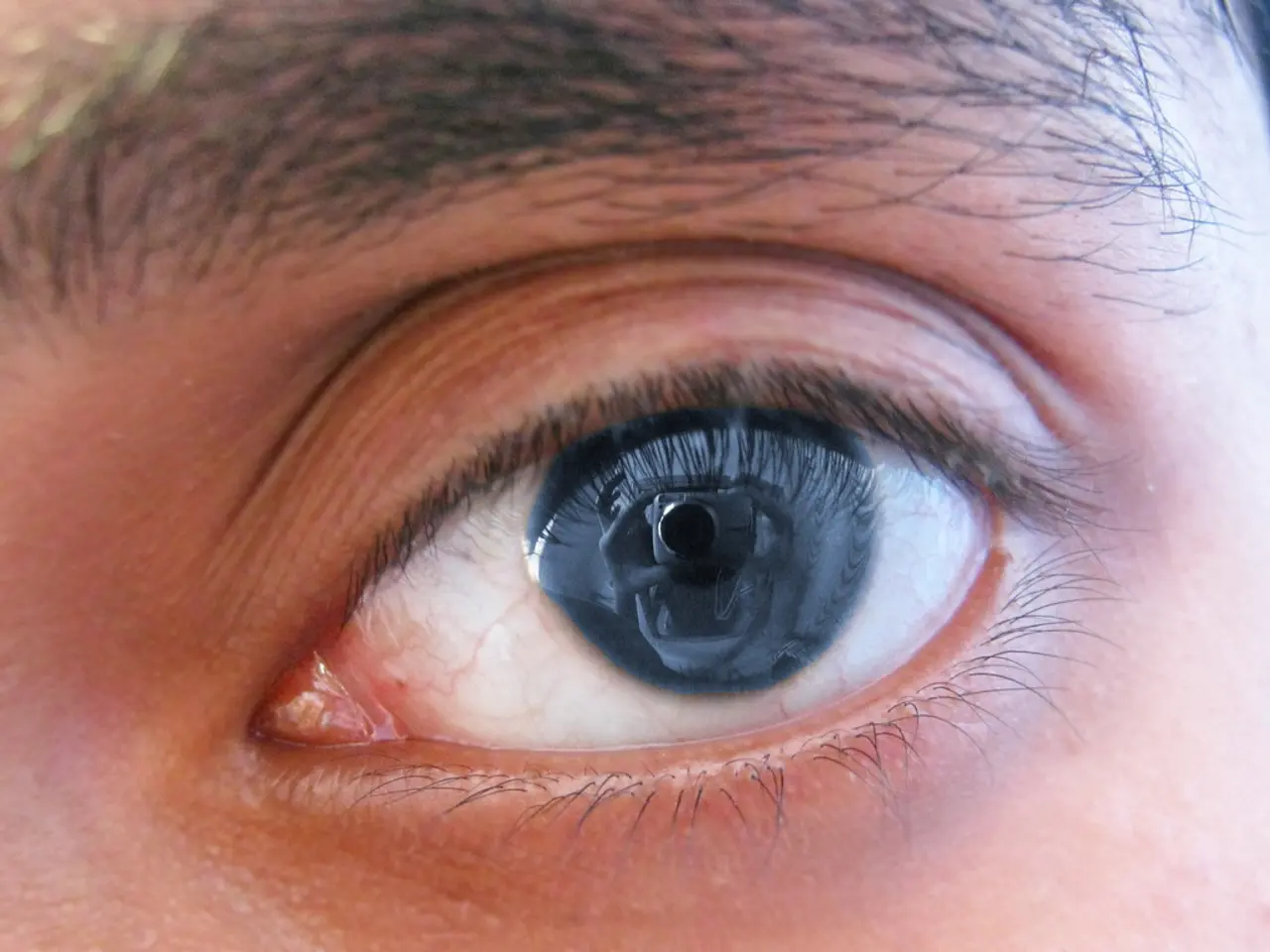Adjusting to Macular Degeneration: Strategies for Managing, Adapting, and Receiving Assistance
In the face of macular degeneration, a common age-related eye condition, individuals can find hope and independence through the use of assistive devices and tailored vision rehabilitation.
By focusing on peripheral vision, one can locate the best field of view by gazing at a brightly coloured object and looking up, down, left, and right. However, when it comes to managing daily life, assistive devices and vision rehabilitation play a significant role.
Assistive devices, such as magnifiers, strong bifocal/trifocal glasses, telescopes for distance viewing, and video magnification systems, help with reading, watching TV, cooking, and other visual tasks impaired by the central vision loss caused by macular degeneration. Electronic and adaptive technologies, like screen readers, text-to-speech software, and Braille displays, enable access to digital information and communication despite poor vision.
Mobility and orientation aids, such as white canes, GPS-enabled wearables, smart glasses with navigation support, and guided navigation services, assist safe travel by providing spatial orientation and real-time auditory directions. This maintains independence outside the home.
Vision rehabilitation services involve individualized counseling, training in using assistive technologies, and adapting the home environment to support safe and effective daily activities. Trainers provide personalized instruction, helping individuals optimize vision use and regain confidence.
Psychosocial support addresses the emotional and psychological impact of vision loss by connecting individuals to support groups and resources aimed at improving quality of life.
Regular eye exams and healthy lifestyle adjustments, such as wearing protective eyewear and sunglasses, avoiding smoking, taking regular breaks when using screens, and practicing proper contact lens hygiene, can help people with macular degeneration protect against further vision loss.
Adaptations in the home, like placing furniture strategically, good lighting, consistent placement of items, using contrasting colours, marking appliance buttons with bump dots, and considering a medical alert system, can help people with low vision maintain independence and safety.
Seeking support from family, friends, and counselors, developing the other senses, especially focusing on hearing to improve memory and provide clues to a person’s location, and maintaining healthy blood sugar levels are all important for managing the emotional impact of macular degeneration and protecting eye health.
Organizations specific to AMD, such as The American Macular Degeneration Foundation, The Macular Degeneration Foundation, and The Macular Degeneration Association, offer additional support through audiobooks, large print materials, technology, and local programs.
In conclusion, assistive devices combined with tailored vision rehabilitation form a critical strategy for managing the challenges of macular degeneration in everyday life. Regular eye exams and a healthy lifestyle are crucial for maintaining eye health and protecting vision.
- Established support groups are beneficial for persons dealing with macular degeneration, helping them navigate the emotional and psychological impact of vision loss.
- Tailored vision rehabilitation programs empower individuals with macular degeneration to optimize their vision use and regain independence.
- Dry AMD, a form of macular degeneration, can be managed with a combination of assorted assistive devices and rehabilitation techniques.
- Trainers who specialize in vision rehabilitation work with clients to enable them to adapt to chronic diseases like macular degeneration using assistive technologies.
- Exercising the eye muscles through regular vision rehabilitation can slow down the progression of age-related macular degeneration (AMD).
- The medical community recognizes chronic kidney disease, respiratory conditions, mental health, nutrition, and skin conditions as significant health-and-wellness factors, yet macular degeneration often goes overlooked.
- Using telescopes or video magnification systems for distance viewing can prove beneficial for people struggling with the central vision loss caused by macular degeneration.
- Science and medical advancements have led to various treatments for macular degeneration, with researchers continuously working to find more effective solutions for this chronic-disease.
- Adapting one's home environment, including strategic furniture placement, good lighting, and using contrasting colors, can make daily life easier for those with low vision or AMD.
- Individuals with macular degeneration can take proactive steps to protect their vision by attending regular eye exams and wearing protective eyewear and sunglasses.




